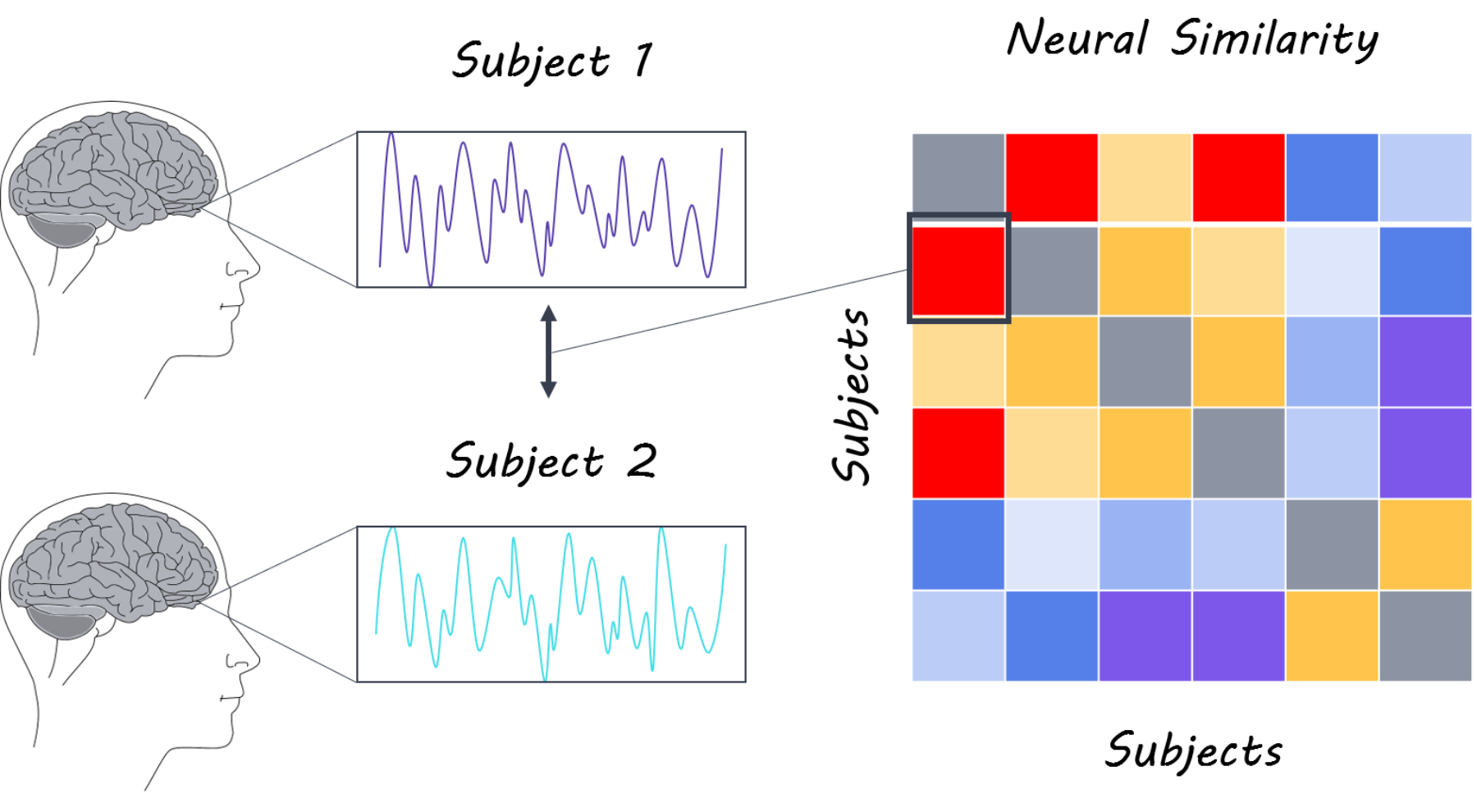Shared Narratives are Associated with Similar Neural Responses
Post by Shireen Parimoo
What’s the science?
People can understand narratives presented in a wide variety of formats, ranging from a series of gestures and speech, to entire movies, and simple animations of geometric shapes. When people view the same narrative, such as a movie, their brain activation patterns are correlated. This neural similarity is particularly evident in regions of the default mode network (DMN), a brain network involved in processing complex narratives, among other things. However, it is unclear whether this neural similarity would be observed when a narrative has multiple interpretations. This week in NeuroImage, Nguyen and colleagues used functional magnetic resonance imaging (fMRI) to examine neural similarity across individuals, particularly in DMN regions, when they were presented with an ambiguous narrative.
How did they do it?
Two groups of participants were presented with either a movie or audio narrative while undergoing fMRI scanning. In one group, 36 adults watched a movie clip of geometric shapes with an ambiguous narrative that contained music to set the mood but no speech. In the other group, 18 adults listened to an audio clip that dictated the narrative corresponding to the movie clip. All participants recalled their respective narratives in detail. In the first analysis, the authors examined whether neural activity was correlated (related) across different participants based on the modality and interpretation of the narrative. Two analyses were performed: 1) Latent Semantic Analysis (LSA) was used to measure similarity of recall among participants within the movie and audio groups, and between the two groups. Participants in the movie group were further split into ‘high’ and ‘low’ recall similarity sub-groups based on their LSA similarity score. Participants in the movie group were also split into ‘high’ and ‘low’ interpretation similarity sub-groups based how correlated their LSA score was to that of participants in the audio group. The neural activity of participants within each of the recall similarity groups was correlated with each other to yield between-participant correlations; likewise, neural activity of participants in the two interpretation similarity groups was correlated with that of participants in the audio group to yield cross-modality between-participant correlations. 2) the authors used between-participant representational similarity analysis (RSA) to identify brain regions where more similar interpretations of the narrative elicited more similar patterns of activity, both within and across the two modalities.
What did they find?
Participants whose recall of the movie was similar (high recall similarity group) had high between-participant correlations in visual and auditory brain areas, as well as in regions involved in complex cognitive processing like the angular gyrus. Importantly, neural similarity in the primary visual cortex and most DMN regions such as the posterior medial cortex and angular gyrus was greater in the high recall similarity than in the low recall similarity group. This suggests that when recall of the movie was very similar across participants, the neural responses in the DMN were more correlated across participants.
When neural responses were compared across modalities, participants who interpreted the movie in a similar way to participants in the audio group (high interpretation similarity group) showed neural similarity in the inferior temporal gyrus. On the other hand, neural responses of participants whose interpretation of the movie was different from that of the audio group (low interpretation similarity group) were correlated in the right angular gyrus. Neural similarity in the posterior medial cortex, angular gyrus, and left medial temporal gyrus was greater in the high interpretation similarity group compared to the low interpretation similarity group, indicating that activity in these regions is more correlated when the people derive similar meaning from a narrative. Finally, the similarity of participants’ interpretation of the narrative was correlated with neural similarity in the right dorsolateral prefrontal cortex, posterior medial cortex, and right angular gyrus.
What’s the impact?
This is the first study to show that when people’s spontaneous understanding of a narrative is similar, so is their brain activity— particularly in the default mode network. Importantly, this neural similarity was modality-invariant, suggesting that the meaning of the narrative, rather than the form in which it was presented, activated those brain regions. This study provides further insight into how social narratives are processed in the brain.
Nguyen et al. Shared understanding of narratives is correlated with shared neural responses. NeuroImage (2018). Access the original scientific publication here.


